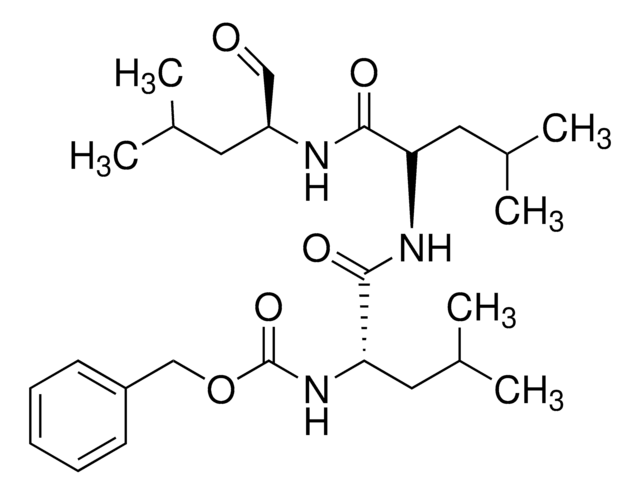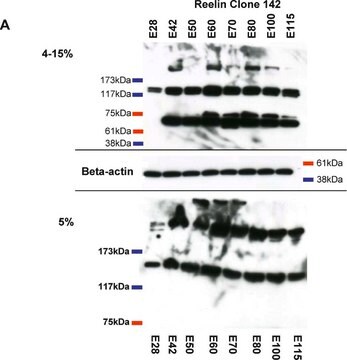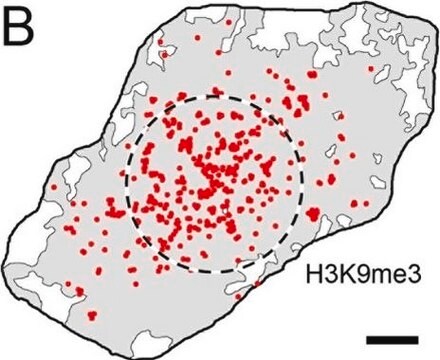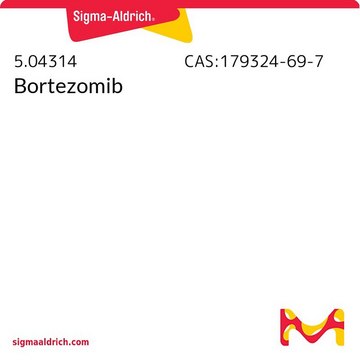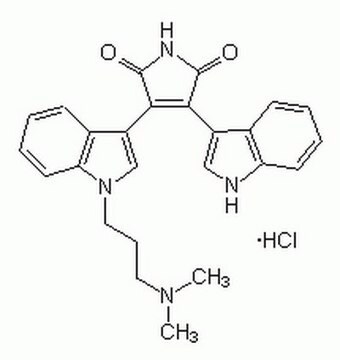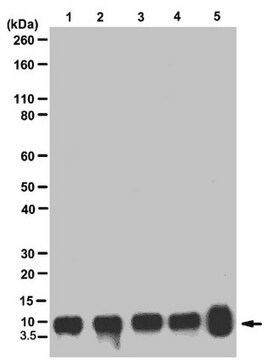05-1355
Przeciwciało przeciwko acetylowi histonu H4 (Lys5/8/12/16), klon 3HH4-4C10
ascites fluid, clone 3HH4-4C10, from mouse
Synonim(y):
H4KAc, histon H4 (acetyl), rodzina histonów H4, członek N, histon H4, rodzina 2, histon 2, H4, histon 2, H4a, histon IV, rodzina 2, klaster histonów 2, H4a
About This Item
Polecane produkty
pochodzenie biologiczne
mouse
Poziom jakości
forma przeciwciała
ascites fluid
rodzaj przeciwciała
primary antibodies
klon
3HH4-4C10, monoclonal
reaktywność gatunkowa
human
reaktywność gatunkowa (przewidywana na podstawie homologii)
mouse (based on 100% sequence homology), rat (based on 100% sequence homology)
metody
immunocytochemistry: suitable
western blot: suitable
izotyp
IgG1κ
numer dostępu NCBI
numer dostępu UniProt
Warunki transportu
dry ice
docelowa modyfikacja potranslacyjna
acetylation (Lys5/Lys8/Lys12/Lys16)
informacje o genach
human ... H4C1(8359)
mouse ... H4C1(326619)
Opis ogólny
Specyficzność
Immunogen
Zastosowanie
Rozcieńczenie 1:500 z reprezentatywnej partii wykryło histon H4 w komórkach A431 i HeLa.
Epigenetyka i funkcje jądrowe
Histony
Jakość
Western Blot Analysis: 1:2,000 dilution of this antibody detected Histone H4 on 10 µg of HeLa acid extract lysate.
Opis wartości docelowych
Postać fizyczna
Przechowywanie i stabilność
Zalecenia dotyczące postępowania: Po otrzymaniu i przed zdjęciem nasadki odwirować fiolkę i delikatnie wymieszać roztwór. Rozdzielić do probówek do mikrowirówki i przechowywać w temperaturze -20°C. Unikać powtarzających się cykli zamrażania/rozmrażania, które mogą uszkodzić IgG i wpłynąć na działanie produktu.
Komentarz do analizy
Lizat ekstraktu kwasu HeLa
Oświadczenie o zrzeczeniu się odpowiedzialności
Nie możesz znaleźć właściwego produktu?
Wypróbuj nasz Narzędzie selektora produktów.
Kod klasy składowania
12 - Non Combustible Liquids
Klasa zagrożenia wodnego (WGK)
WGK 1
Temperatura zapłonu (°F)
Not applicable
Temperatura zapłonu (°C)
Not applicable
Certyfikaty analizy (CoA)
Poszukaj Certyfikaty analizy (CoA), wpisując numer partii/serii produktów. Numery serii i partii można znaleźć na etykiecie produktu po słowach „seria” lub „partia”.
Masz już ten produkt?
Dokumenty związane z niedawno zakupionymi produktami zostały zamieszczone w Bibliotece dokumentów.
Nasz zespół naukowców ma doświadczenie we wszystkich obszarach badań, w tym w naukach przyrodniczych, materiałoznawstwie, syntezie chemicznej, chromatografii, analityce i wielu innych dziedzinach.
Skontaktuj się z zespołem ds. pomocy technicznej
